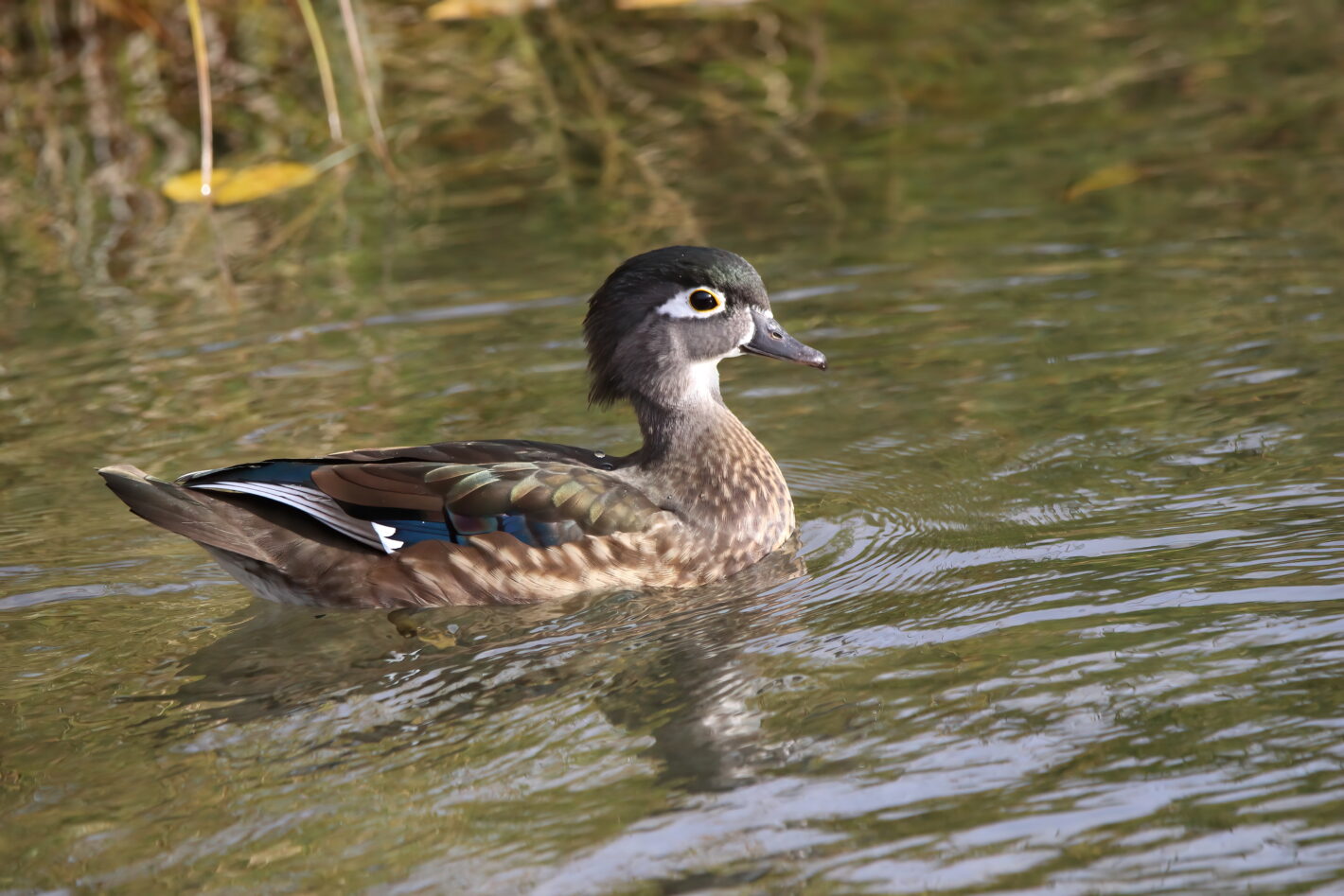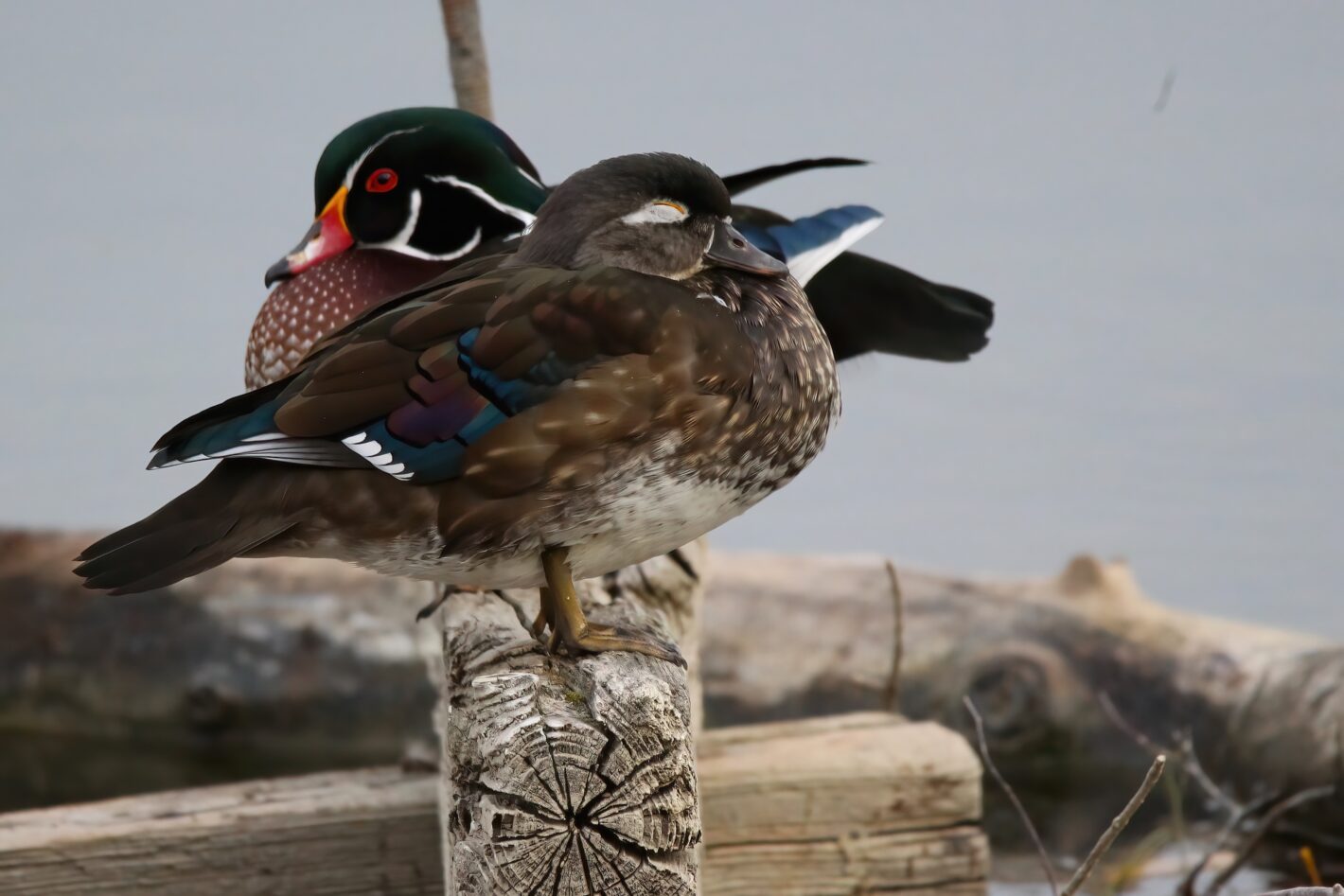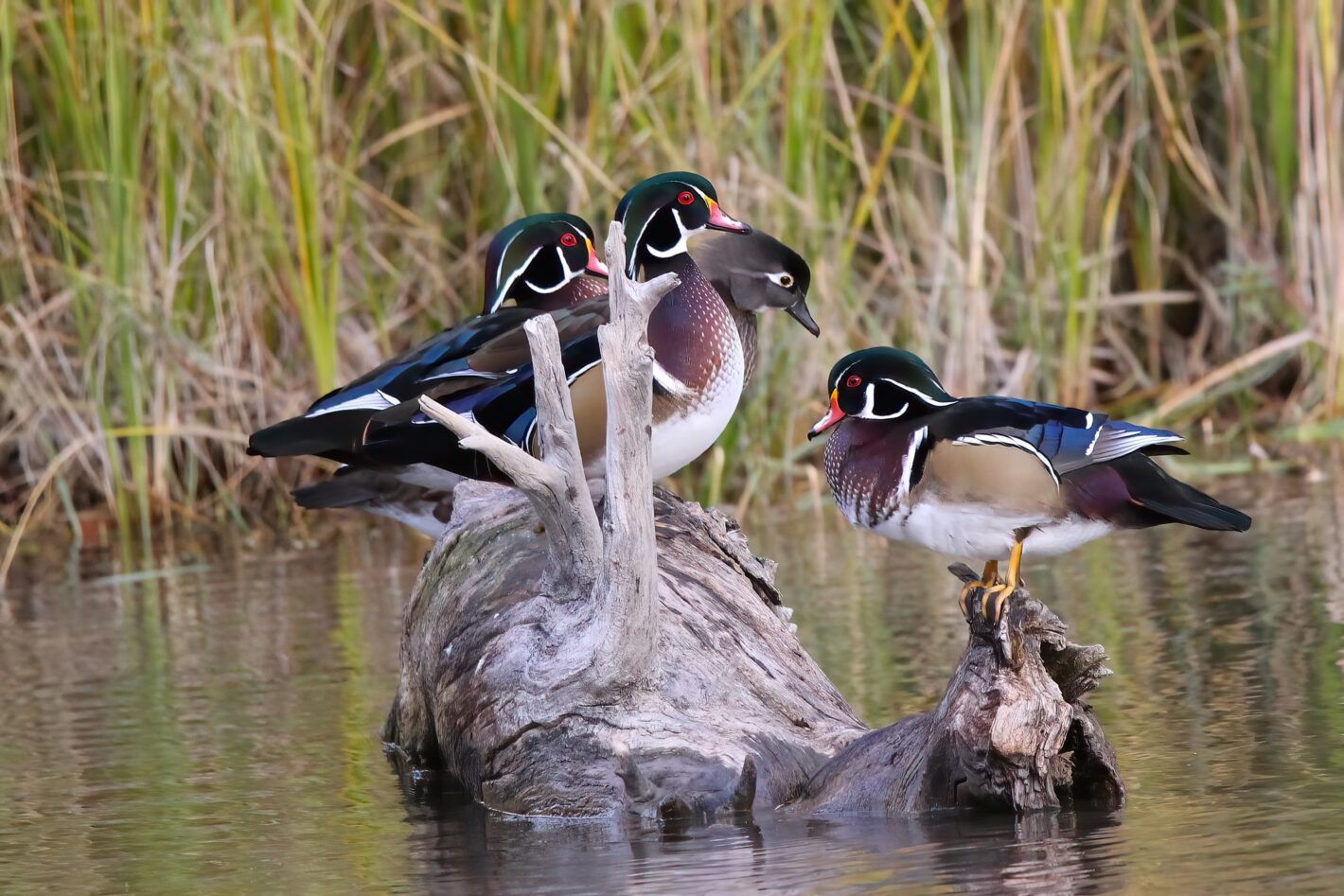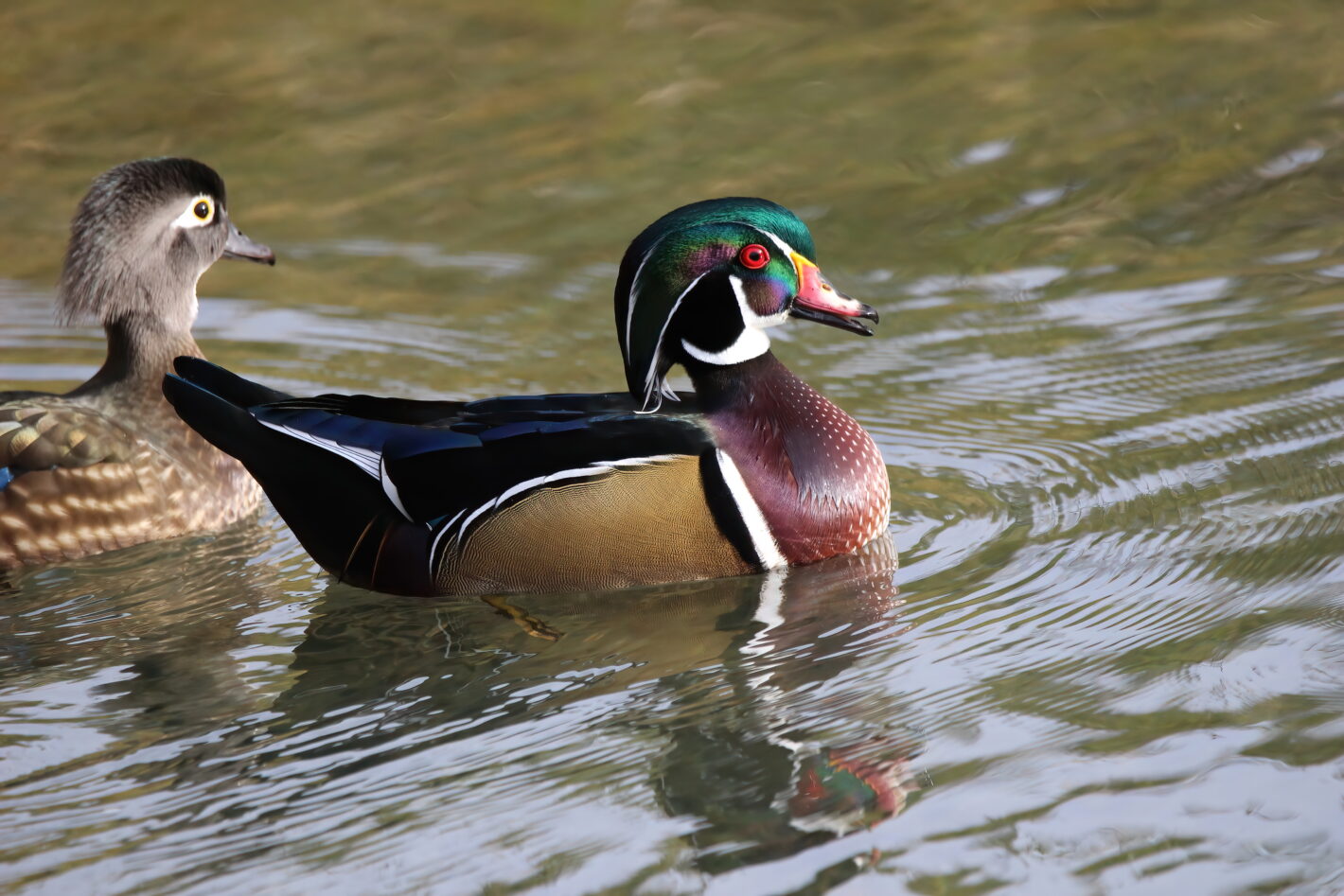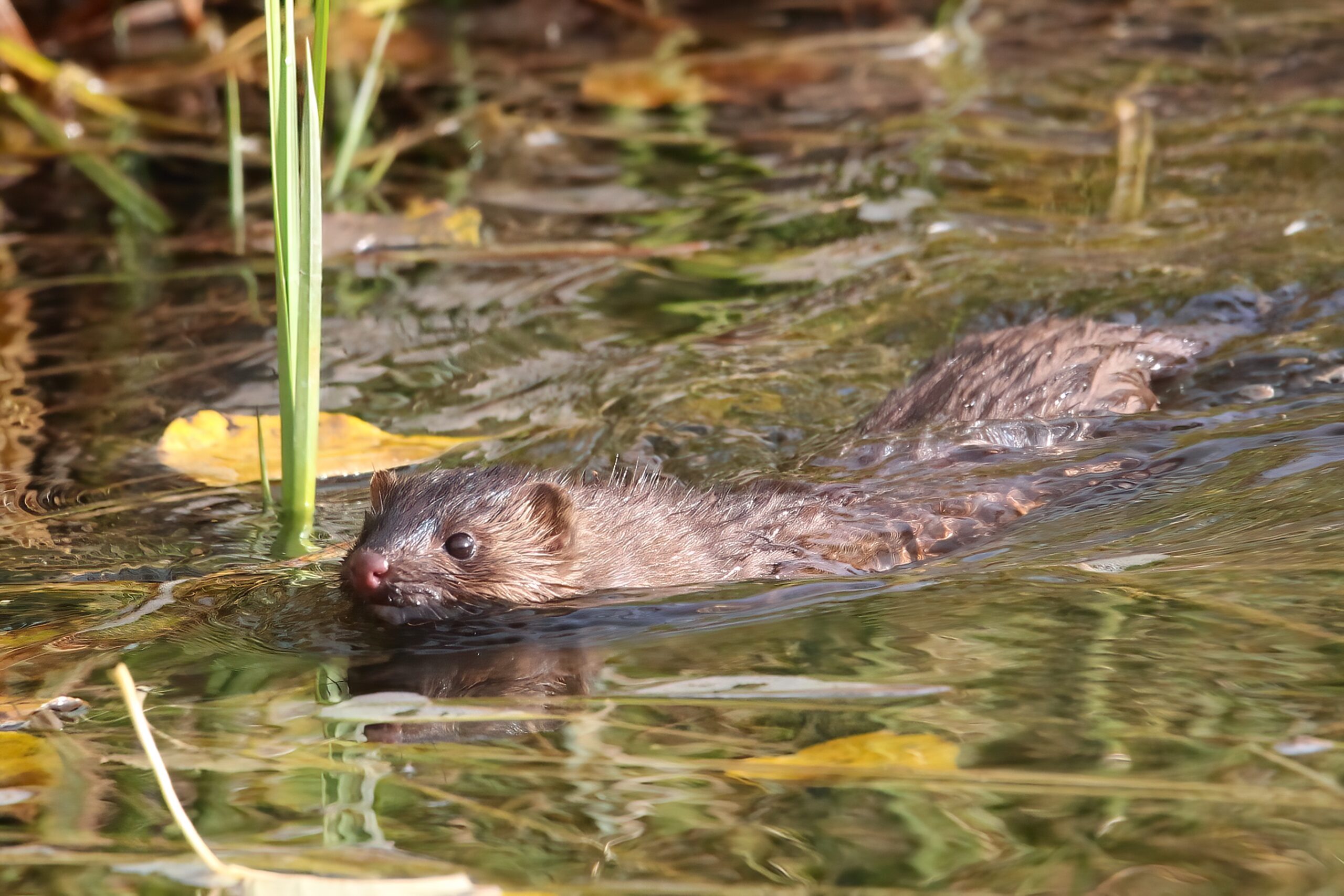Moving to southern Alberta about a half dozen years ago, with birding a part of the motivation, we did not anticipate the surprising number of species that make Calgary and the surrounding area an appealing area to explore for all bird watchers. One absolutely stunning member of the wildfowl community is the Wood Duck. Although, the Inglewood Bird Sanctuary, near downtown Calgary is clearly home to more than thirty Wood Ducks this autumn, we have seen them in a few other locations. Carburn Park, a bird and wildfowl haven, Wyndham-Carseland Provincial Park and Fish Creek Provincial Park come to mind in looking back over our sighting records.
Our first sighting occurred at Inglewood in mid-April of 2021. Jaw-dropping, two-lung gasping and eyeball popping, would be understatements at our first viewing of this species. I had imagined Pablo Picasso or Salvador Dali creating a new species in the past with the end result being this feathered multi-colored, seemingly hand painted and wonderfully crested duck. Somewhat boxy in shape, this medium sized perching duck, provides natural beauty with two unique color schemes, one for each sex. Males boast a mix of green and blue, a chestnut breasted chest, bright orange beak, red eyes and a black and white neck displayed from October through to June. Females are painted in a gray-brown, adding to its speckled white breast, sport a white teardrop shaped eye ring and do show a dark blue speculum that is edged with a well defined white stripe.
Unlike our other ducks, Wood Ducks have claws — yes claws! These claws enable Wood Ducks to grip bark and perch on branches. Being a tree cavity nester, these ducks will nest up to two kilometres away from water. Woodpecker holes are seldom used as nesting sites for the two broods of eggs laid by the female, something unique to this species. Wood Duck ducklings leap to freedom from heights of over fifteen metres or fifty feet, without being injured a single day after hatching. A dabbling duck, the Wood Duck tips tail up and feeds on vegetation sources in the shallows of sloughs and slow moving water bodies. It may even complete shallow dives as needed to forage. Although vegetation makes up at least eighty percent of its diet, delectable insects are enjoyed as well.
While watching the thirty plus Wood Ducks snooze on partially submerged dead falls in the earlier hours, catching the right light to capture their beauty is key to the total enjoyment of this species. At times, the flock will swim together and then disappear quietly into the tall grasses and shorelines, only to appear some time later. On our most recent visit to Inglewood in October, a dozen ducks took time to escort a mink, leisurely cruising the eastern shoreline of the main pond in which the Wood Ducks live.
In checking breeding and migration maps, the vast majority of Wood Ducks ring in the next generation, nesting in southern New Brunswick, Quebec, Ontario, Manitoba and British Columbia as well as the northern United States. Migration south to escape Canada’s winter is mostly to the United States. However, some Wood Ducks do indeed overwinter in southeastern British Columbia.
With the brilliant gold, red and green leaves shimmering in the sunlight, combined with clear waters of the Bow River and the radiant hues of each Wood Duck, nature does indeed smile upon us in the month of October.
